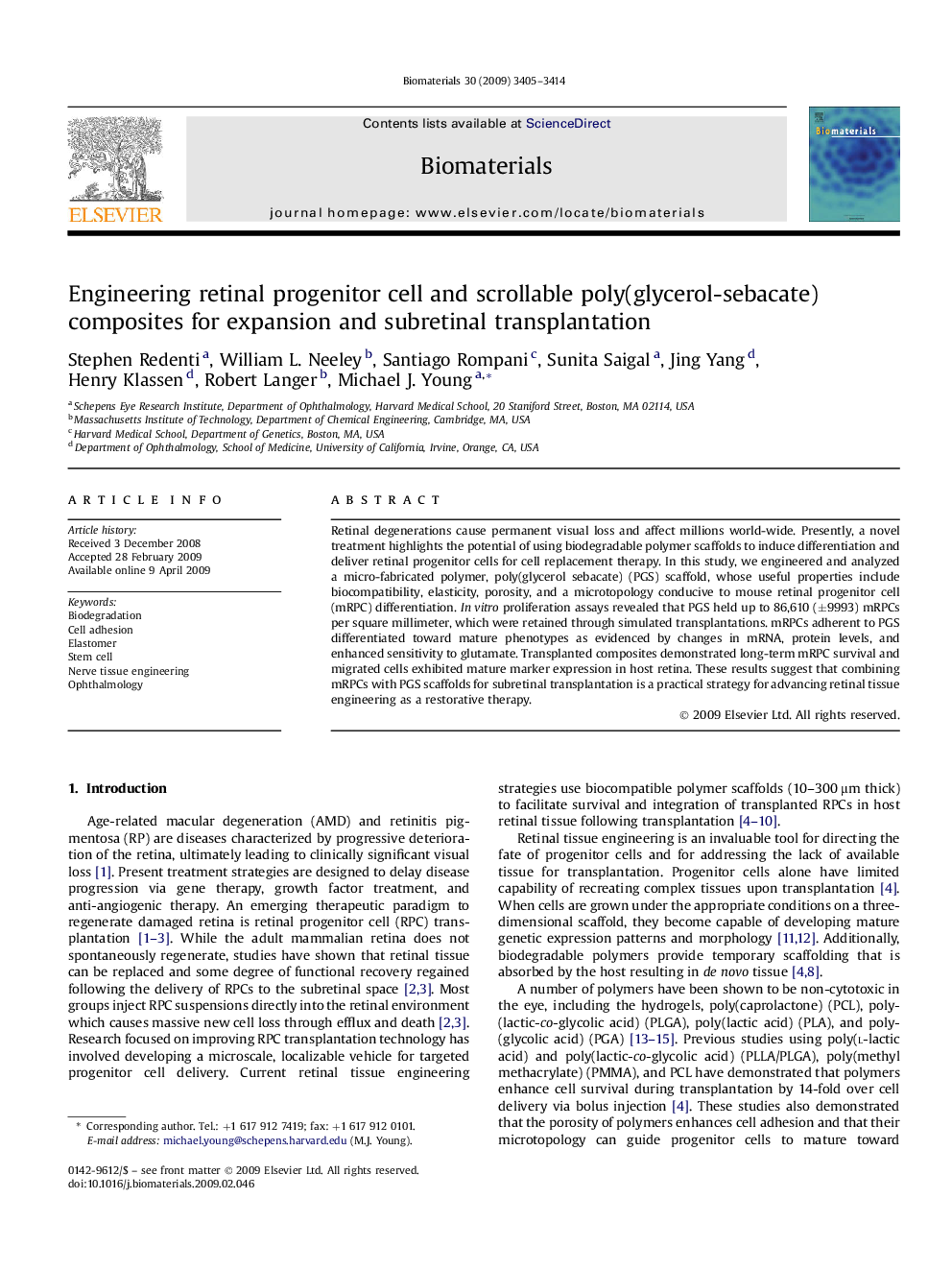| Article ID | Journal | Published Year | Pages | File Type |
|---|---|---|---|---|
| 10297 | Biomaterials | 2009 | 10 Pages |
Retinal degenerations cause permanent visual loss and affect millions world-wide. Presently, a novel treatment highlights the potential of using biodegradable polymer scaffolds to induce differentiation and deliver retinal progenitor cells for cell replacement therapy. In this study, we engineered and analyzed a micro-fabricated polymer, poly(glycerol sebacate) (PGS) scaffold, whose useful properties include biocompatibility, elasticity, porosity, and a microtopology conducive to mouse retinal progenitor cell (mRPC) differentiation. In vitro proliferation assays revealed that PGS held up to 86,610 (±9993) mRPCs per square millimeter, which were retained through simulated transplantations. mRPCs adherent to PGS differentiated toward mature phenotypes as evidenced by changes in mRNA, protein levels, and enhanced sensitivity to glutamate. Transplanted composites demonstrated long-term mRPC survival and migrated cells exhibited mature marker expression in host retina. These results suggest that combining mRPCs with PGS scaffolds for subretinal transplantation is a practical strategy for advancing retinal tissue engineering as a restorative therapy.
